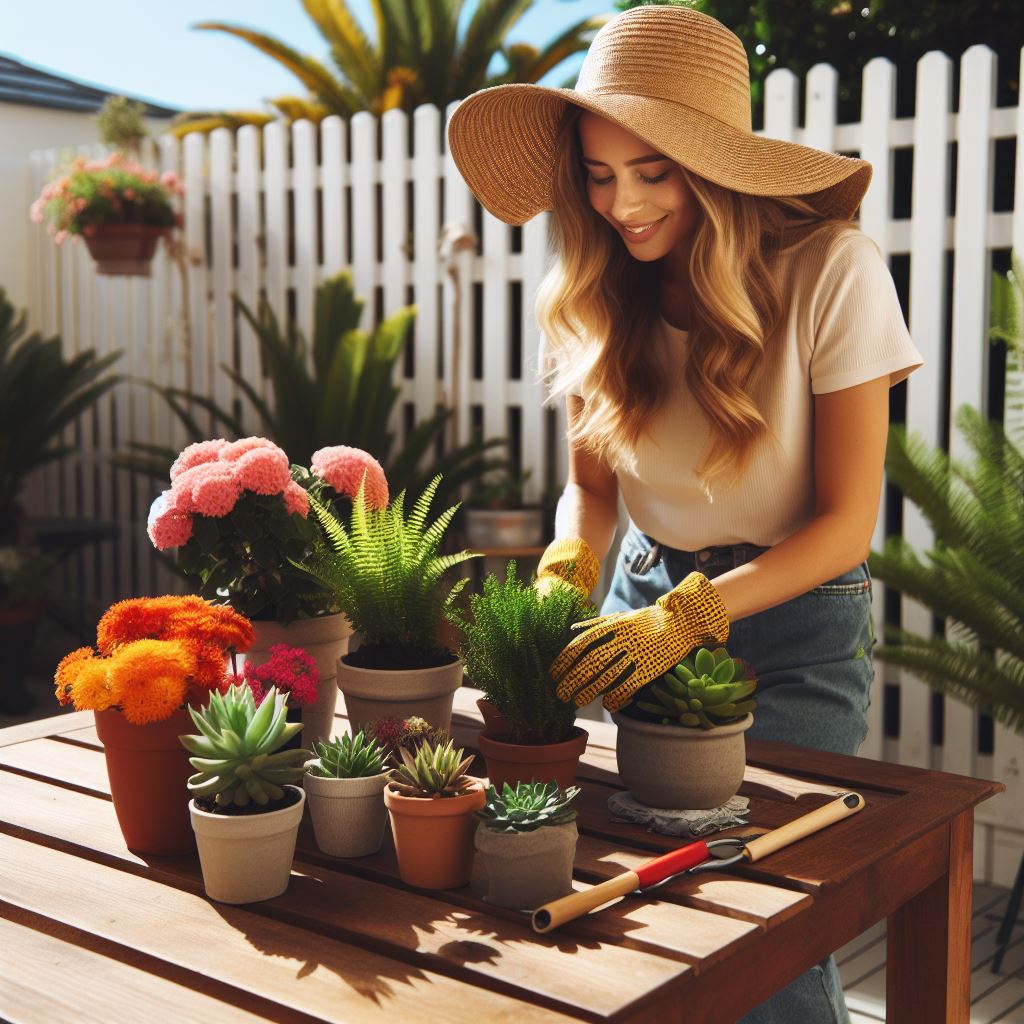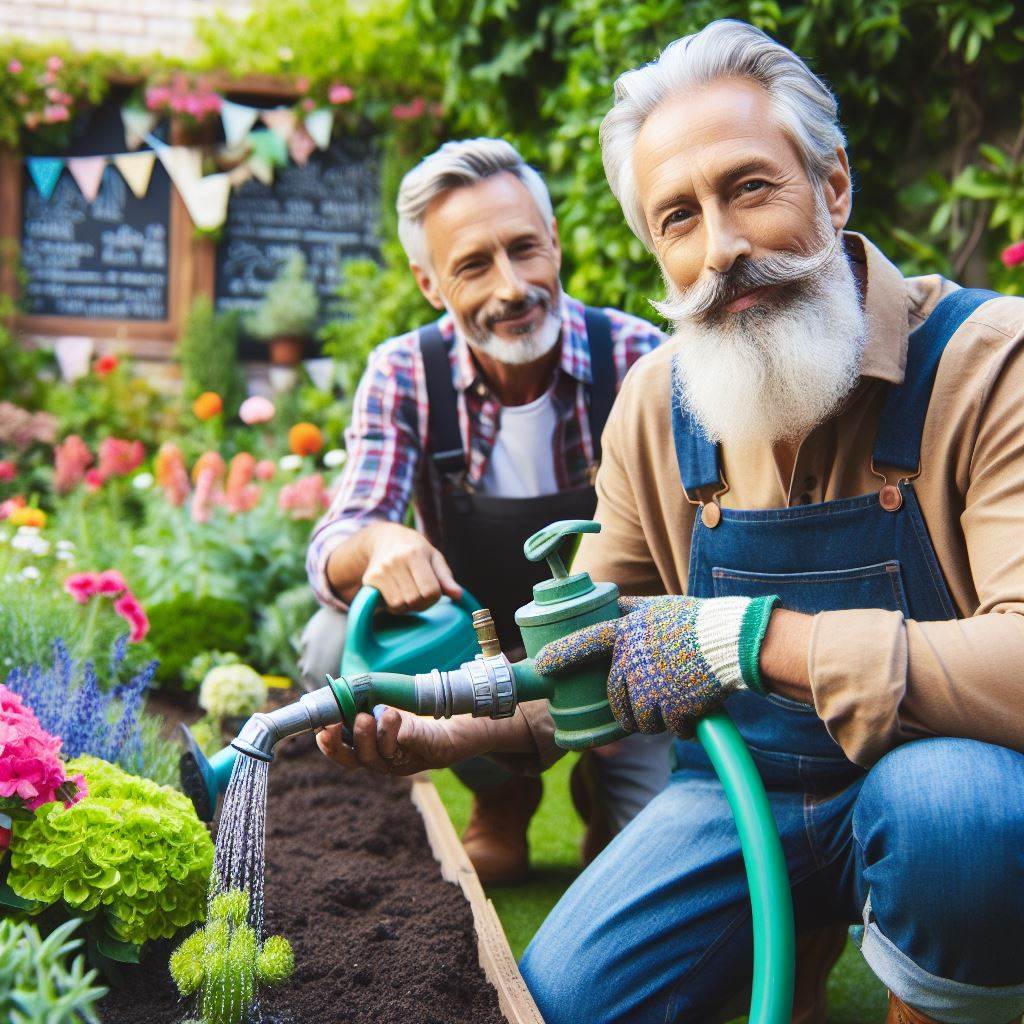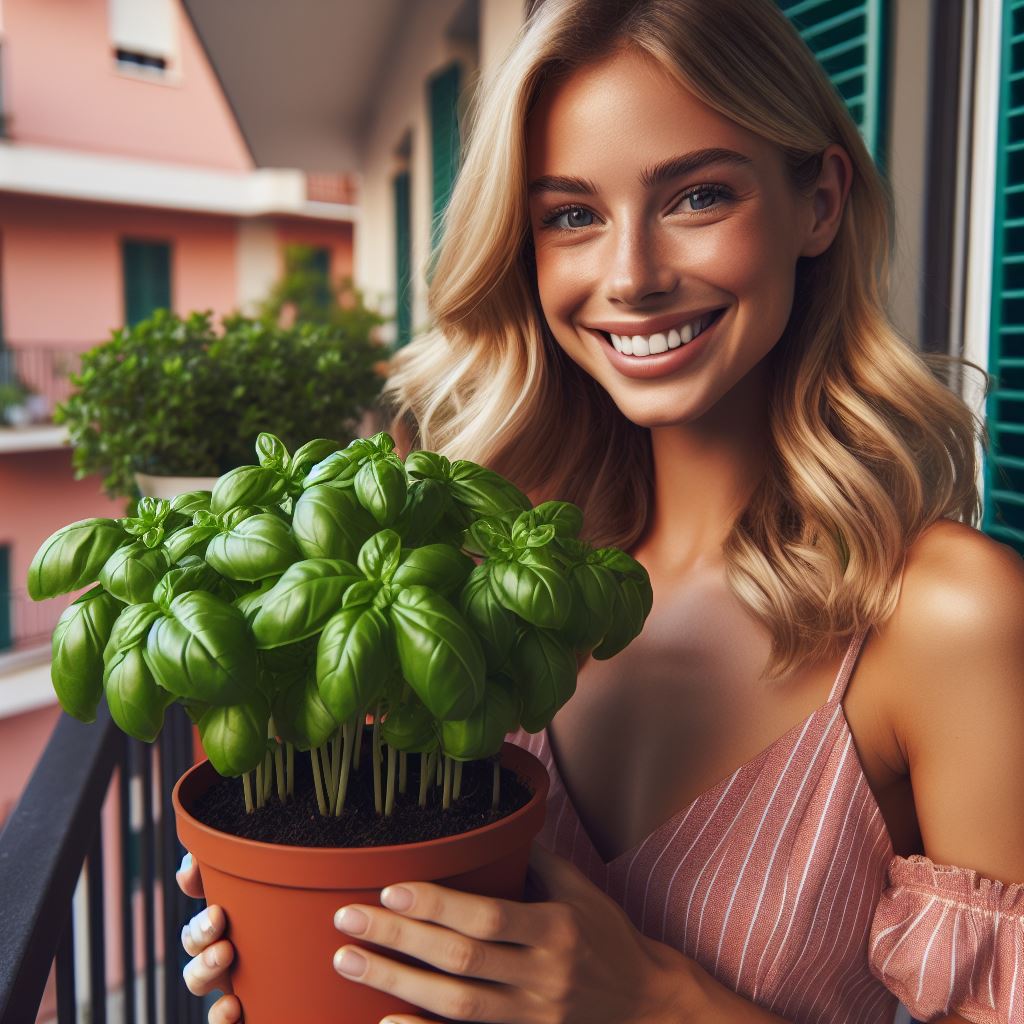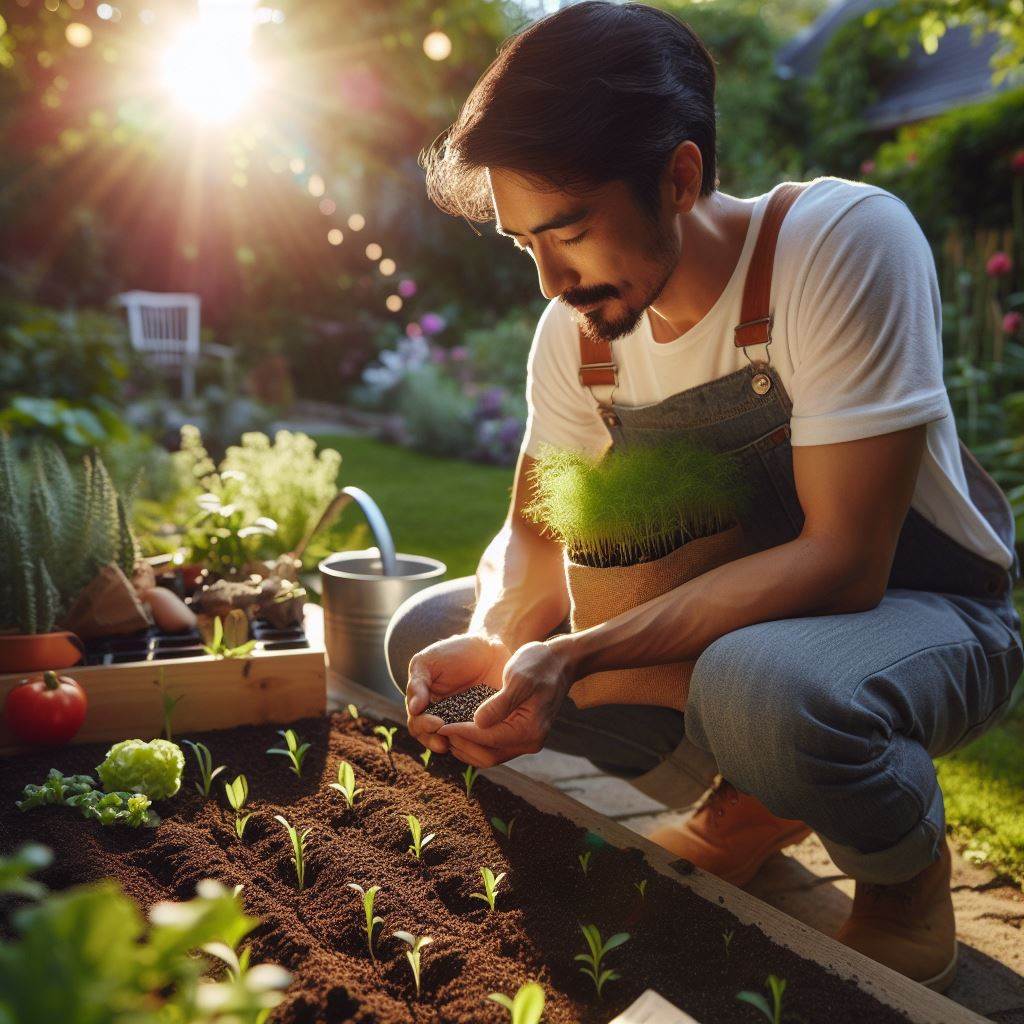Introduction
The concept of growing fruit trees in pots
In recent years, there has been a growing trend in small-space gardening, as people with limited outdoor areas still aspire to grow their own fruits and vegetables.
One innovative approach to this is the concept of growing fruit trees in pots, which allows individuals to create their very own mini orchards, even within the confines of a small patio or balcony.
The idea behind growing fruit trees in pots is simple yet effective.
By carefully selecting dwarf or miniature varieties of fruit trees and planting them in containers, anyone can enjoy the beauty and bounty of these trees without the need for a large garden.
The process involves choosing the right pot size, using well-draining soil, and providing adequate sunlight and water.
Importance of small-space gardening and the popularity of container gardening
The importance of small-space gardening cannot be overlooked.
With urban areas becoming more densely populated and green spaces becoming rarer, the need for creative gardening solutions becomes imperative.
Container gardening, including growing fruit trees in pots, offers a feasible solution to this challenge.
The popularity of container gardening has skyrocketed in recent years, as it provides numerous advantages for both novice and experienced gardeners.
The ability to control soil conditions, easy maintenance, and the flexibility to move pots to optimize sunlight are just a few of the benefits that make container gardening an appealing choice for many.
Basically, the concept of growing fruit trees in pots combines the joy of gardening with the practicality of limited-space solutions.
Small-space gardening and container gardening have gained popularity due to their convenience and flexibility, making it possible for anyone to cultivate their own orchard, no matter the size of their living space.
Advantages of Growing Fruit Trees in Pots
Accessibility for small-space gardeners, apartment dwellers, or those with limited outdoor areas
- Growing fruit trees in pots allows people with limited space to enjoy fresh fruits.
- Even people living in apartments or urban areas can grow their own fruit trees.
- Potted fruit trees can be easily managed in small spaces such as balconies or rooftops.
Growing fruit trees in pots offers several advantages for both seasoned and novice gardeners.
One major advantage is the accessibility it provides for those with limited outdoor areas.
Small-space gardeners, apartment dwellers, or urban residents can now enjoy the benefits of growing their own fruit trees.
Transform Your Agribusiness
Unlock your farm's potential with expert advice tailored to your needs. Get actionable steps that drive real results.
Get StartedFlexibility in terms of changing locations, allowing plants to adapt to different lighting and temperature conditions
- Potted fruit trees offer the advantage of mobility, enabling gardeners to move them as needed.
- Gardeners can optimize lighting conditions by relocating potted fruit trees to sunny spots.
- Potted fruit trees can be moved indoors during winter months to protect them from freezing temperatures.
The flexibility of growing fruit trees in pots is another significant advantage.
Unlike in-ground trees, potted fruit trees can easily be moved to adapt to different lighting and temperature conditions.
This flexibility allows gardeners to find the ideal environment for their trees, ultimately improving their growth and productivity.
Easier pest and disease management and improved fruit quality due to better control over the plant’s environment
- Growing fruit trees in pots makes it easier to monitor and prevent pest infestations.
- Diseases can be quickly identified and treated when fruit trees are in pots.
- By controlling the soil mix, watering, and fertilization, fruit quality can be improved.
Pest and disease management also becomes easier when growing fruit trees in pots.
Regular inspections and monitoring can help identify and address pest infestations or diseases promptly.
Additionally, diseases that are common in certain areas can be minimized or avoided altogether by keeping potted fruit trees in controlled environments.
Controlling the plant’s environment also contributes to improved fruit quality.
By choosing the right soil mix, providing appropriate watering and fertilization, gardeners have better control over the health and nutrient intake of their potted fruit trees.
This, in turn, leads to better fruit quality, taste, and overall productivity.
Aesthetic appeal and the ability to create a beautiful, portable orchard
- Potted fruit trees enhance the visual appeal of any garden or outdoor space.
- Gardeners can arrange different types of fruit trees in an artistic and organized manner.
- Potted fruit trees can be decorated with colorful pots or trellises to enhance their beauty.
Apart from the practical benefits, potted fruit trees also offer aesthetic appeal.
They can be arranged in visually pleasing patterns, creating a portable orchard that adds beauty and charm to any outdoor space.
Gardeners can choose colorful pots or complement their trees with trellises to enhance the overall look.
Essentially, growing fruit trees in pots provides numerous advantages.
Whether you have limited space, need flexibility in location, desire easier pest management, or want to enhance the beauty of your garden, potted fruit trees offer a perfect solution.
With proper care and attention, anyone can enjoy the satisfaction of growing their own fruit, even in the smallest of spaces.
Read: Vertical Gardens: Maximize Your Space
Choosing the Right Fruit Trees for Containers
Considerations for selecting the appropriate fruit tree varieties
- Choose suitable fruit tree varieties that are well-suited for container cultivation.
- Consider the space available for containers and choose compact varieties that won’t outgrow their pots.
- Research the fruit tree’s pollination requirements to ensure proper fruit set.
- Select disease-resistant varieties to minimize the risk of pest and disease problems.
Factors to evaluate, such as mature height, root system, and chill hours required:
- Consider the mature height of the fruit tree, keeping in mind that taller trees may require staking or pruning.
- Assess the root system to ensure it is suitable for container growth, avoiding vigorous rootstocks.
- Check the chill hours required by the fruit tree, as some varieties need a specific amount of cold hours to produce fruit.
- Choose varieties that are suitable for your climate, considering temperature and humidity levels.
Popular fruit tree options for container gardening, including dwarf and miniaturized varieties
- Dwarf fruit trees are excellent choices for containers, as they have a compact size but still produce full-size fruit.
- Miniaturized fruit trees, such as columnar or espaliered varieties, are great for maximizing limited space.
- Apple, pear, cherry, and citrus trees often have dwarf or miniaturized varieties suitable for container gardening.
- Consider fruit trees that are self-fertile or have a high chance of cross-pollination for better fruit production.
Compatibility of fruit trees with container gardening techniques
- Ensure proper drainage in the containers to prevent waterlogged soil, which can lead to root rot.
- Use a well-draining potting mix specifically formulated for container gardening.
- Choose containers with adequate size and depth to accommodate the fruit tree’s root system.
- Regularly monitor and adjust watering and fertilization, as container-grown fruit trees may have different needs than those planted in the ground.
In a nutshell, selecting the right fruit trees for container gardening requires careful consideration.
Choose varieties that are suitable for container growth, taking into account factors such as mature height, root system, and chill hours required.
Popular options include dwarf and miniaturized varieties of apple, pear, cherry, and citrus trees.
Ensure compatibility with container gardening techniques by providing proper drainage, using appropriate potting mix, and monitoring watering and fertilization.
With the right fruit trees and proper care, you can enjoy a bountiful harvest even in limited spaces.
Read: Compact Composting: Urban Eco Tips
Selecting the Right Containers and Planting Techniques
Ideal container characteristics, including size, material, drainage, and stability
When it comes to growing fruit trees in pots, selecting the right containers is crucial. The characteristics of the ideal container are as follows:
- Size: The container should have sufficient space for the tree’s root system to grow. A general rule of thumb is to choose a pot that is double the size of the tree’s current root ball.
- Material: It is best to opt for containers made of durable materials such as plastic, fiberglass, or terracotta. These materials provide adequate insulation for the roots while maintaining stability.
- Drainage: Proper drainage is essential for the health of fruit trees in pots. Containers with drainage holes at the bottom prevent waterlogging and promote good air circulation.
- Stability: Fruit trees can become top-heavy as they grow. To prevent the tree from toppling over, choose pots with a wide base or consider using heavy materials like concrete or stone.
Importance of selecting and preparing the right potting mix for fruit trees
The quality of the potting mix used for fruit trees greatly impacts their growth and overall health. Here are some key points to consider:
Showcase Your Farming Business
Publish your professional farming services profile on our blog for a one-time fee of $200 and reach a dedicated audience of farmers and agribusiness owners.
Publish Your Profile- Nutrient-rich: Fruit trees require a well-balanced potting mix that provides essential nutrients. Opt for mixes specifically formulated for fruit trees or create a custom mix using peat moss, compost, and perlite.
- Good drainage: The potting mix should have excellent drainage properties to prevent excess moisture retention, which can lead to root rot. Avoid heavy soils that can become compacted over time.
- pH levels: Fruit trees prefer slightly acidic to neutral soil pH. Testing the potting mix’s pH and adjusting it accordingly ensures the trees can efficiently absorb nutrients from the soil.
- Disease prevention: Using sterile potting mix reduces the risk of diseases and pests. Avoid using garden soil, as it may contain pathogens that can harm your fruit trees.
Planting step-by-step guide, including proper spacing, planting depth, and support for the tree
Following the correct planting techniques ensures the successful establishment of fruit trees in pots.
Here’s a step-by-step guide:
- Spacing: Ensure adequate space between trees to allow for proper air circulation and future growth. The specific requirements may vary depending on the fruit tree variety.
- Planting depth: Dig a hole in the potting mix deep enough to accommodate the tree’s roots. Place the tree in the hole, ensuring that the root crown sits slightly above the soil line.
- Backfilling: Gently backfill the hole with the potting mix, firming it around the roots to eliminate air pockets. Avoid compacting the soil excessively, as it may restrict root growth.
- Support: For young or top-heavy trees, provide support to prevent them from bending or snapping. Use stakes or a trellis system, being careful not to damage the roots.
- Watering: After planting, thoroughly water the tree to settle the soil. Subsequently, water regularly, ensuring the potting mix remains evenly moist but not waterlogged.
- Fertilization: Apply a slow-release fertilizer specifically formulated for fruit trees according to the package instructions. Regularly monitor the tree’s nutritional needs and adjust fertilization accordingly.
By selecting the right containers, preparing the appropriate potting mix, and following proper planting techniques, you can create a thriving tiny orchard that yields delicious fruits.
Remember to regularly monitor the trees’ health, provide adequate care, and enjoy the fruits of your labor.
Read: Rooftop Gardens: Sky-High Greenery

Caring for Fruit Trees in Pots
Providing proper sunlight, temperature, and watering requirements
- Place potted fruit trees in a sunny area, ensuring they receive at least 6 hours of sunlight daily.
- Monitor temperature fluctuations to protect the trees from extreme cold or heat.
- Regularly water the trees, keeping the soil consistently moist but not soaked.
Taking care of fruit trees in pots requires attention to their sunlight, temperature, and watering needs.
Placement in a sunny area where they can receive at least 6 hours of sunlight daily is essential.
Temperature fluctuations must be monitored to protect the trees from extreme cold or heat, which can stunt their growth or damage them.
Adequate watering is also crucial, ensuring the soil remains consistently moist but not waterlogged.
Remember to adjust watering frequency based on weather conditions, allowing the soil to dry out slightly between waterings.
Nutritional needs of potted fruit trees, such as fertilization and soil amendments
- Use a balanced, slow-release fertilizer designed for fruit trees to ensure they receive adequate nutrients.
- Apply fertilizer according to the package instructions and adjust based on tree growth and fruit production.
- Regularly amend the potting soil with organic matter to improve its fertility and drainage.
Proper nutrition is vital for potted fruit trees.
Use a balanced, slow-release fertilizer specifically formulated for fruit trees to provide them with essential nutrients.
Apply the fertilizer according to the package instructions and adjust the amount based on the tree’s growth and fruit production.
Additionally, regularly amending the potting soil with organic matter improves its fertility and drainage, creating an optimal growing environment for the trees.
Pruning and training techniques to maintain small sizes, encourage fruit production, and shape the tree
- Prune the fruit trees during their dormant season to remove dead or diseased branches and promote air circulation.
- Use heading cuts to reduce the tree’s size and stimulate lateral branching.
- Train the branches to grow in desired shapes, such as an open vase or central leader form, using stakes or ties.
Pruning and training techniques are necessary to maintain the small size of potted fruit trees, promote fruit production, and shape their overall structure.
Prune the trees during their dormant season, removing dead or diseased branches and enhancing air circulation within the canopy.
Heading cuts can be used to reduce the tree’s size and stimulate lateral branching, leading to increased fruit-bearing potential.
Training the branches to grow in desired shapes, such as an open vase or central leader form, can be achieved using stakes or ties.
Pests and diseases specific to container-grown fruit trees and strategies for prevention or control
- Inspect the trees regularly for common pests like aphids, mites, and scale insects.
- Introduce beneficial insects or use appropriate insecticides to control pest infestations.
- Prevent diseases by maintaining proper hygiene, avoiding over-watering, and providing adequate air circulation.
When growing fruit trees in pots, it is crucial to be aware of the specific pests and diseases that may affect container-grown trees.
Regularly inspect the trees for common pests like aphids, mites, and scale insects, as infestations can lead to significant damage.
Integrating beneficial insects or using suitable insecticides can help control pest populations effectively.
Diseases can be prevented through proper hygiene practices, avoiding over-watering, and providing adequate air circulation around the tree.
Caring for fruit trees in pots may require more attention and care than trees planted in the ground.
However, with the right knowledge and practices, it is possible to cultivate healthy and fruitful trees in a smaller space.
Remember to always research and follow specific care guidelines for the types of fruit trees you have, as their requirements may differ slightly.
Read: Urban Farming: Small Plot, Big Yield
Harvesting and Enjoying the Fruits
Indications of ripeness and the best time for fruit harvest
- Observe the color of the fruits – they should be vibrant, fully colored, and free from blemishes.
- Gently press the fruit – it should have a slight give without being too soft or mushy.
- Check for fragrance – the fruits should emit a pleasant aroma when they are ripe.
- Refer to the specific variety’s recommendations for the ideal harvesting time.
Tips for maximizing fruit production and ensuring fruit quality
- Provide adequate sunlight, water, and nutrients to promote healthy growth and abundant fruiting.
- Regularly prune and thin out the branches to improve air circulation, sunlight exposure, and overall fruit quality.
- Protect the fruits from pests and diseases by applying organic pest control methods and monitoring regularly.
- Support the branches with stakes or trellises to prevent breakage due to the weight of the fruit.
- Remove any damaged or diseased fruits promptly to prevent further spread of infections.
- Harvest the fruits gently, using sharp shears or pruners to avoid damaging the tree or the remaining fruits.
Culinary ideas and delicious recipes using homegrown fruits from potted trees
- Create a refreshing fruit salad by combining your homegrown fruits with a variety of other seasonal fruits.
- Make a homemade fruit jam or jelly using your ripe fruits as a delicious spread for toast or sandwiches.
- Bake a mouthwatering fruit pie or tart, incorporating your homegrown fruits into a flavorful filling.
- Blend up a nutritious and flavorful fruit smoothie using your freshly harvested fruits and your favorite dairy or non-dairy base.
- Experiment with fruit-infused water by adding slices of your homegrown fruits to a pitcher of chilled water for a refreshing beverage.
- Create a unique fruit salsa by combining diced fruits with onions, peppers, cilantro, and lime juice for a delightful twist.
- Whip up a tasty fruit salsa by mixing your homegrown fruits with onions, tomatoes, jalapenos, and lime juice.
- Make a fruity dessert sauce by simmering your homegrown fruits with sugar, water, and a touch of lemon juice.
- Craft a flavorsome fruit chutney by cooking your homegrown fruits with vinegar, spices, and onions for a versatile condiment.
- Indulge in a delectable fruit cobbler or crumble featuring your homegrown fruits topped with a buttery, sweet crumbly crust.
Enjoy the fruits of your labor and savor the satisfaction of harvesting and using homegrown fruits from your potted trees.
Get creative in the kitchen and explore the endless culinary possibilities that these fruits offer. Bon appétit!
Conclusion
Growing fruit trees in pots offers many benefits that make it a practical gardening method worth exploring.
Container gardening allows you to grow dwarf fruit varieties in small spaces, provide ideal drainage and soil conditions, and easily move trees to protect them or capture the best sun exposure.
Fruit trees thrive with proper care – regular watering, fertilizing, pruning and pest management.
While container size limits full-size harvests, dwarf trees produce a satisfying crop of full-flavored fruit.
Hopefully the idea of creating your own tiny orchard, with mini apple, peach, cherry or citrus trees, appeals to your interests as a gardener.
With just a bit of effort and care, container gardening makes it possible to grow fruit trees and enjoy fresh-picked flavors almost anywhere.
I invite you to start your research on recommended varieties, potting practices and tree care tips.
Your tiny orchard could be planted this season!
Please share your experiences growing fruit trees in pots by leaving a comment below.
What lessons have you learned or what tips can you offer?
I look forward to hearing from you!




